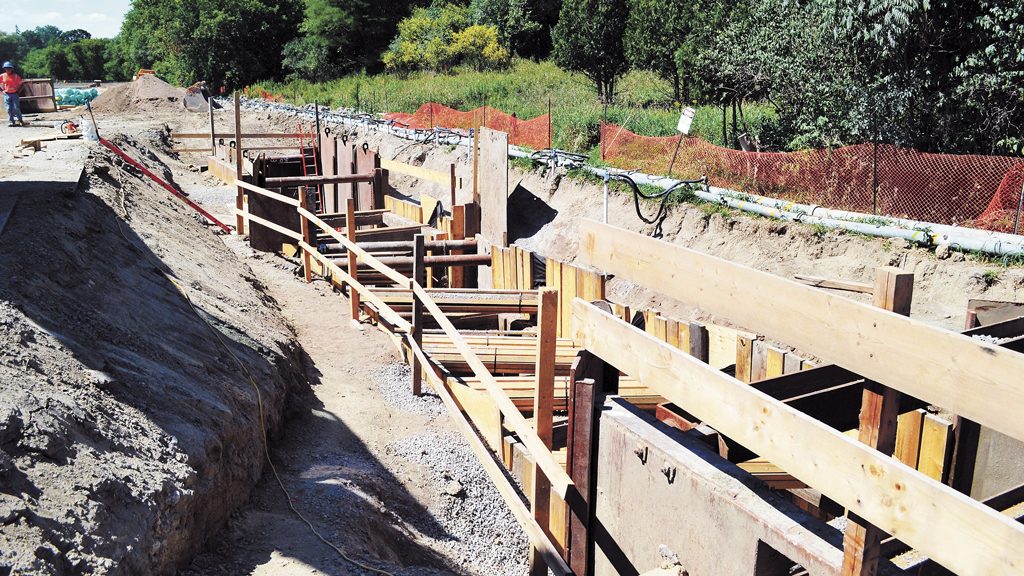Emery Creek in northwest Toronto is a small tributary to the Humber River with an outsized pollution problem. Given its size, it contributes more than its share of pollutants, including lead, zinc, copper and sewage. Construction of a series of three engineered stormwater retention ponds by Clearway Construction is designed to slow down runoff and allow pollution to settle before water enters the Humber.
The project, valued at just over $14 million, was completed on behalf of the City of Toronto and was overseen by engineer of record WSP Canada. It included excavation of more than 300,000 cubic metres of earth, design and construction of two temporary access bridges, and numerous pre-cast concrete elements and control structures.
Emery is an industrial neighbourhood founded in the mid-1950s. As factories were built, Emery Creek was boxed and buried although factories used the tributary to drain stormwater runoff and industrial sewage. By the mid-1990s, groups including the Emery Creek Environmental Association began work to promote improved water quality. However, residual pollutants continue to enter the creek.
The project is located in St. Lucie Park where Emery Creek enters the Humber.
“The three connected ponds have a combined capacity of more than 60,000 cubic metres,” says Mark Meyer, general manager with Clearway. The first pond is a sedimentation pond, designed to take out the bulk of the particles. The second is a shallow wetland system that acts as a settling pond, while plants remove excess nutrients and heavy metal. The third is the largest and allows settlement of fine particles before water is discharged through a pipe to the Humber.
Infrastructure built for the project includes precast concrete headwalls, a precast baffle wall by IECS Ready Mix Inc., and large diameter concrete pipes placed between ponds. A cast-in-place concrete weir allows Emery Creek waters to be diverted to the retention ponds.

Construction began in March 2016 alongside Emery Creek, which would only be connected to the retention system following project completion.
A staging area was established off Weston Road near the entrance to the park with six large pieces of excavation equipment, including bulldozers and rock trucks, brought to the site. As many as 30 workers were occupied on the site at one time.
Adding to the complexity of the project, the construction team needed to develop a series of rigorous slope protection and erosion control approaches to deal with precipitation while working on the Humber floodplain.
“We had significant rainfall and rising floodwaters during construction,” says Meyer.
“To prevent silt from entering the Humber, we surrounded the work area with an engineered enclosure. This was essentially a geotextile sock with a gravel and filter medium packed inside it. Once processed, the filtered water was directed into the Humber River.”
Earthmoving operations were generally uneventful until it came time to join two of the ponds with 2,100-mm concrete pipe.
“The corridor between the ponds was home to six oil and gas pipelines,” says Meyer.
“The internal piping between the ponds had to run underneath the gas and oil pipes, which were located between 1.5 and 2.5 metres deep. The work was completed with some custom shoring, pipeline support and protection and very careful mechanical and vacuum excavation — all under the watchful eye of the gas utility.”
As the project neared completion, the bottoms of two of the ponds were lined with a composite bentonite clay liner.
Work on the site was completed in October 2017 following landscaping.
“Once the weir was opened and Emery Creek was allowed to flow into the retention ponds, they filled quite quickly,” says Meyer. “You can see that a small creek has a lot of impact.”







Recent Comments